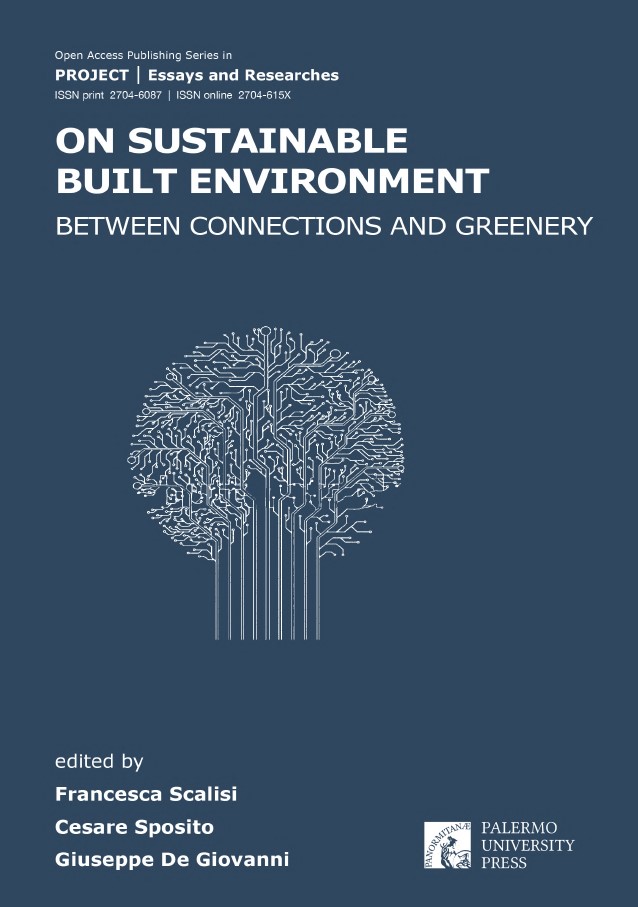
Title
BIM, IOT and AAL. Digital modelling and 4.0 management of care and assistance services
DOI
doi.org/ 10.19229/978-88-5509-446-7/7132022
Keywords
ambient assisted living, building information modelling, healthcare design and management, internet of things, industry 4.0
Abstract
The transition towards digital healthcare is considered by the EU as a successful approach to improve assistance access and care quality and to increase the efficiency of the healthcare system. The use of BIM, IoT technologies and ICT applications in the Architectural Engineering and Construction Industry (AEC) can provide important benefits to the implementation of effective design and management processes, revolutionising the design of buildings used to provide care and assistance services. Starting from the comparison with some design experimentation experiences carried out during the pandemic, this paper deals with the development of a digital model of Ambient Assisted Living (AAL) where the BIM method is used to facilitate the interoperability of the data concerning IoT devices and the management of Facility Management activities linked to it.
Section
Architecture | Research & Experimentation
pp. 228-247
Author(s)
Anna Mangiatordi
Author(s) Biography
Anna Mangiatordi, Architect and PhD, is a Temporary Researcher and Adjunct Professor of the Degree Course in Green Infrastructures and Biomaterials. She carries out research activities at LAB.ITECH, the DIAP Department of the University ‘Sapienza’ in Rome (Italy) on smart typological and technological innovation in buildings for vulnerable and elderly users (AAL), green technologies and nature-based materials, and the use of methods and digital tools to control and handle the project. Mob. +39 347/38.53.532 | E-mail: anna.mangiatordi@uniroma1.it
References
Arbizzani, E. (2021), “High isolation hospital clusters – A model for managing health emergencies in pandemic times”, in SMC – Sustainable Mediterranean Construction, vol. 13, pp. 56-62. [Online] Available at: sustainablemediterraneanconstruction.eu/SMC/The_Magazine_n_13_files/1305.pdf [Accessed 16 July 2022].
Arbizzani, E. and Clemente, C. (2020), “Il tempo del processo – Tempo versus qualità nell’attuazione del ciclo edilizio | The time of the process. Time versus quality in the building cycle”, in Techne | International Journal of Architecture and Environment, vol. 20, pp. 140-147. [Online] Available at: doi.org/10.13128/techne-8244 [Accessed 16 July 2022]
ARUP (2019), Digital Twin – Towards a meaningful framework. [Online] Available at: arup.com/perspectives/publications/research/section/digital-twin-towards-a-meaningful-framework [Accessed 16 July 2022].
BiblusBIM (2020),“Il BIM a servizio dell’emergenza – Container per la terapia intensiva”, in bim.acca.it, 03/05/2020. [Online] Available at: bim.acca.it/potenzialita-del-bim-a-servizio-della-emergenza/ [Accessed 16 July 2022].
Campioli, A. (2020), “Tecnologie e cultura del progetto nella società delle mangrovie”, in Perriccioli, M. Rigillo, M., Russo Ermolli, S. and Tucci, F. (eds), Design in the Digital Age – Technology, Nature, Culture, Maggioli Editore, Sant’Arcangelo di Romagna, pp. 68-70. [Online] Available at: sitda.net/downloads/biblioteca/e-book_%20AAVV_Design%20in%20the%20digital%20age.pdf [Accessed 16 July 2022].
Dave, B., Buda, A., Nurminen, A. and Framling, K. (2018), “A framework for integrating BIM and IOT through open standards”, in Automation in Construction, vol. 95, pp. 35-45. [Online] Available at: doi.org/10.1016/j.autcon.2018.07.022 [Accessed 16 July 2022].
De Giovanni, G. (2018), “Health emergency and impermanence | Emergenza sanitaria e temporeaneità”, in Agathón | International Journal of Architecture and Design, vol. 4, pp. 13-20. [Online] Available at: doi.org/10.19229/2464-9309/422018 [Accessed 16 July 2022].
Deng, M., Menassa, C. C. and Kamat, V. R. (2021), “From BIM to Digital Twins – A systematic review of the evolution of intelligent building representations in the AEC-FM Industry”, in Journal of Information Technology in Construction, vol. 21, pp. 58-83. [Online] Available at: itcon.org/papers/2021_05-ITcon-Deng.pdf [Accessed 16 July 2022].
European Commission (2021), Regulation (EU) 2021/522 of the European Parliament and of the Council of 24 March 2021 establishing a Programme for the Union’s action in the field of health (‘EU4Health Programme’) for the period 2021-2027, and repealing Regulation (EU) No 282/2014, document 32021R0522. [Online] Available at: eur-lex.europa.eu/legal-content/EN/TXT/?uri=CELEX%3A32021R0522 [Accessed 16 July 2022].
European Commission (2020), Shaping the digital transformation in Europe. [Online] Available at: ospi.es/export/sites/ospi/documents/documentos/Sstudy_Shaping_the_digital_transformation_in_Europe_Final_report_202009.pdf [Accessed 16 July 2022].
Ghaffarianhoseini, A., Tookey, J., Naismith, N., Azhar, S., Efimova, O. and Raahemifar, K. (2017), “Building Information Modeling (BIM) – Clear benefits, understanding its implementation, risks, challenges”, in Renewable and Sustainable Energy Reviews, vol. 75, pp. 1046-1053. [Online] Available at: doi.org/10.1016/j.rser.2016.11.083 [Accessed 16 July 2022].
Ling-Kun, C. et alii (2021), “Modular composite building in urgent emergency engineering projects – A case study of accelerated design and construction of Wuhan Thunder God Mountain/Leishenshan hospital to Covid-19 pandemic”, in Automation in Construction, vol. 124, article 103555, pp. 1-11. [Online] Available at: doi.org/10.1016/j.autcon.2021.103555 [Accessed 16 July 2022].
Mangiatordi, A. (2020), Smart Technologies and Design in Ambient Assisted Living for the Ageing Society – Tecnologie intelligenti e progetto negli ambienti domestici (AAL) per una società che invecchia, Tesi di Dottorato in Pianificazione, Design e tecnologia dell’Architettura, ‘Sapienza’ Università di Roma.
MASS (2020), Designing Senior Housing for Safe Interactions – The Role of Architecture in Fighting Covid-19. [Online] Available at: massdesigngroup.org/sites/default/files/multiple-file/2020-07/Designing%20Senior%20Housing%20for%20Safe%20Interaction.pdf [Accessed 16 July 2022].
Peng, C. (2021), “Application of prefabricated building in emergency rescue project construction Taking – Wuhan Huoshenshan Hospital Project as an example”, in IOP Conference Series Earth and Environmental Science, vol. 742, pp. 1-7.[Online] Available at: doi.org/10.1088/1755-1315/742/1/012005 [Accessed 16 July 2022].
Russo Ermolli, S. (ed.) (2018), The Changing Architect – Innovazione tecnologica e modellazione informativa per l’efficienza dei processi, Maggioli Editore, Santarcangelo di Romagna. [Online] Available at: sitda.net/downloads/altri_eventi/The%20Changing%20Architect_indice.pdf [Accessed 16 July 2022].
Simeone, D. and Cursi, S. (2016), “The role of semantic enrichment Building Information Modeling”, in TEMA | Technologies Engineering Materials Architecture, vol. 2, issue 2, pp. 22-30. [Online] Available at: doi.org/10.17410/tema.v2i2.105 [Accessed 16 July 2022].
Tang, S., Shelden, D. R., Eastman, C. M., Pishdad-Bozorgi, P. and Gao X.(2019),“A review of building information modeling (BIM) and the internet of things (IoT) devices integration – Present status and future trends”, in Automation and Construction, vol. 101, pp. 127-139.[Online] Available at: doi.org/10.1016/j.autcon.2019.01.020 [Accessed 16 July 2022]
WHO – World Health Organization (2021), Novel Coronavirus (2019-nCoV) – Situation Report. [Online] Available at: who.int/docs/default-source/coronaviruse/situation-reports/20200131-sitrep-11-ncov.pdf?sfvrsn=de7c0f7_4 [Accessed 16 July 2022].
WHO – World Health Organization (2020), Severe Acute Respiratory Infection Treatment Centre – Practical manual to set up and manage a SARI treatment centre and a SARI screening facility in health care facilities. [Online] Available at: who.int/publications/i/item/10665-331603 [Accessed 16 July 2022].

